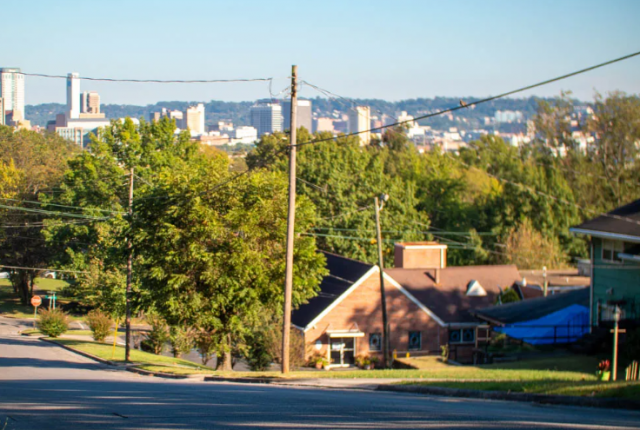By Ryan Michaels
The Birmingham Times
If at first you don’t succeed, try again.
That’s what the City of Birmingham did on Tuesday to apply for a $50 million federal grant to revitalize the Smithfield community.
“We’ve applied for this grant before [in 2020], and we know why we didn’t get it, but we are we feel good about our opportunity this time,” Mayor Randall Woodfin said during Tuesday’s City Council meeting.
The Choice Neighborhoods Implementation Grant from the U.S. Department of Housing and Urban Development (HUD) is intended to help replace distressed public housing and improve its surrounding neighborhoods. The competitive grant is given to a handful of communities across the country each year.
The city hopes to replace the Smithfield Court public housing development with new mixed-income housing. Birmingham’s Smithfield community includes the Smithfield neighborhood, as well as College Hills, East Thomas, Enon Ridge and Graymont.
Smithfield, one of Birmingham’s historic communities, was once known as “Dynamite Hill, because of multiple bombings conducted by the Ku Klux Klan to try to scare off Black families who were working to integrate the neighborhood. It was also home to some of Birmingham’s most iconic figures like Civil Rights lawyer Arthur Shores; entrepreneur A.G. Gaston; political activist Angela Davis and Alabama Supreme Court Justice Oscar Adams Jr.
That history is important for the proposed revitalization, said Meghan Venable-Thomas, the director of Community Development for Birmingham, who said the city has leveraged more funding this round—up to $35 million, as compared to 2020’s $7.5 million—and forged more partnerships and selected more sites for replacement housing.
“We want to be able to honor all of those folks and all of the many beautiful contributions that have been made there, but also think about how that impacts the future, and how can we bring in social innovation, economic impact, and really think about what the future of Smithfield could look like,” she said.
A part of the proposal is acquiring A.H. Parker High School’s surplus property, which is a little over 11 acres. Plans would be to build 350 units of new multifamily homes in that space. Overall, if awarded, the city plans to build up to 1,100 housing units across the community. The city would provide up to $35 million of matching funds over the eight-year grant term.
Much of the historic neighborhood was also built and designed by its Black residents. Venable-Thomas said honoring the legacy means “we’re talking about people, we’re talking about history, but we’re also talking about design.”
Councilor Carol Clarke said the Choice Neighborhoods grant allows the city to “achieve catalytic development in a weak market around many of our public housing sites.”
Councilor Darrell O’Quinn said the “potential for transformation is just phenomenal…when I think about the history of Smithfield, all the racial terrorism that happened there and the prominent persons in the Black community who made that their home, there’s just so much history there, and it’s such an area that so much deserves this type of effort.”
Council President Pro Tem Crystal Smitherman said the revitalization effort could help the city by easing the tension of housing costs for residents of Birmingham and potentially bring more people back into the city.
“People have been saying for the last few years ‘Birmingham [has been] losing our population,’ but I think this is encouraging people to come back and…refilling our schools, helping that out. I think if we give people great environments, then their kids can thrive in it.”
Council President Wardine Alexander recalled the “pride” that she saw in Smithfield and said she would like to see it return.
“When we think of how this can revitalize and bring that area back to life, not that it’s not living right now, but we can bring young families back into that area. I’m very excited about that,” Alexander said.
The application is due Wednesday, Jan. 11. Finalists are expected to be notified this summer and winners notified in the fall.




